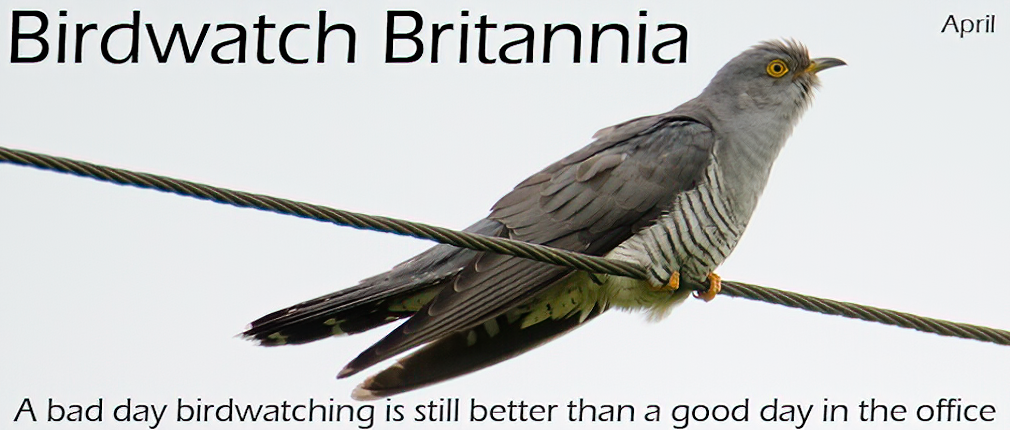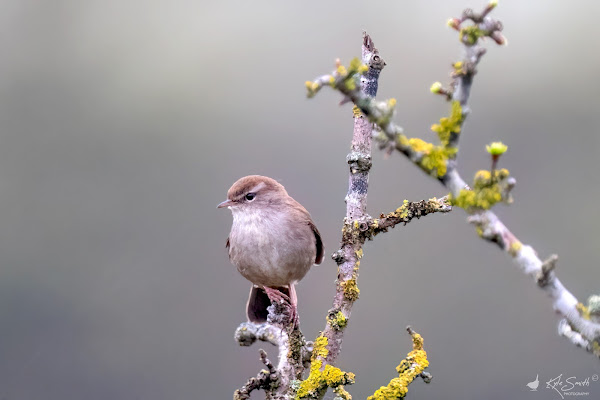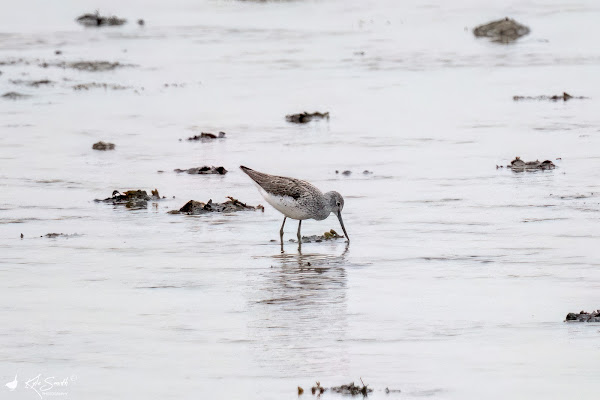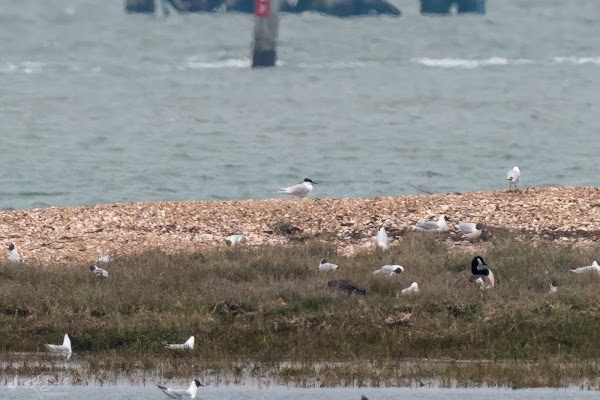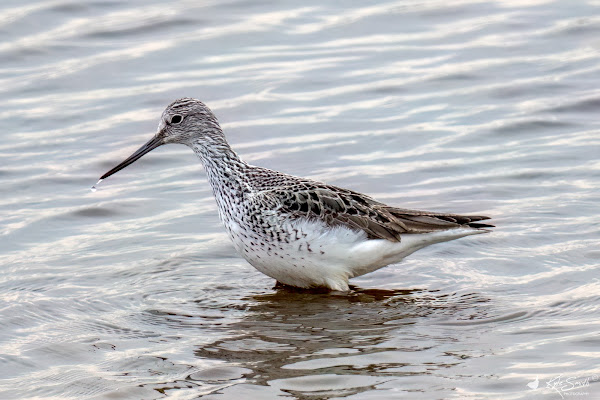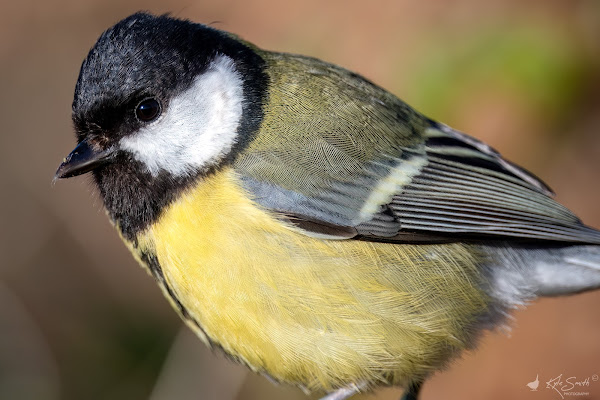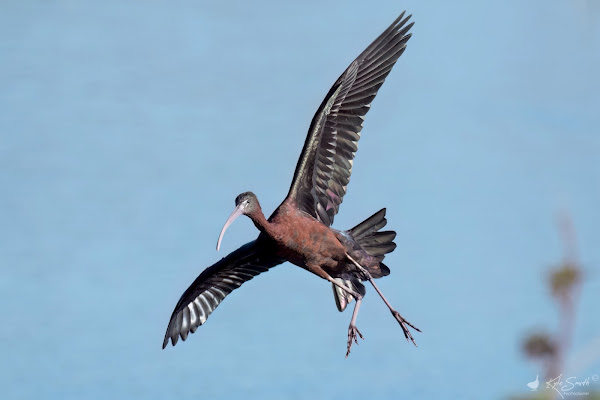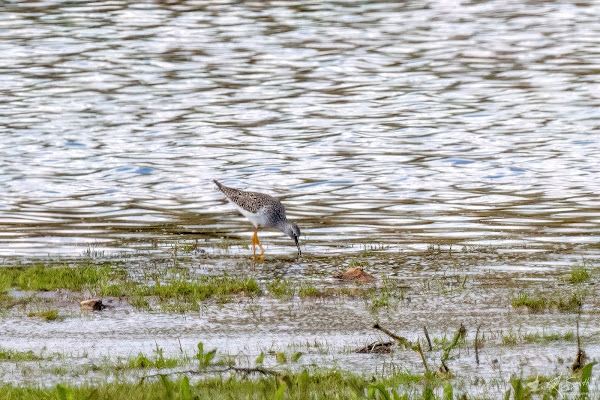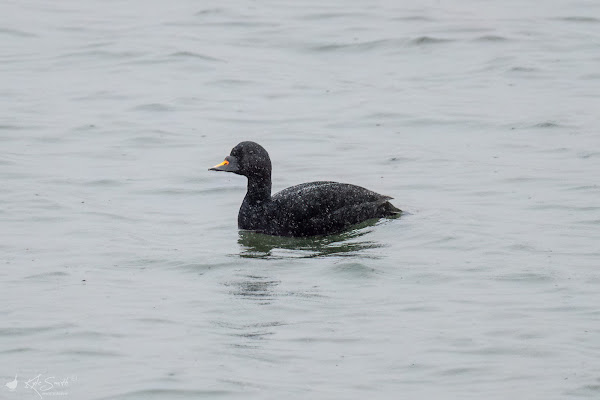Two black winged stilts had been reported at Pennington Marshes at last light on Friday, on Fishtail Lagoon. We met early and after stopping on the way for breakfast we arrived just around 7.30am. There was limited space in the car park and people were obviously out looking already. We booted up and set off in the direction of the location posted the night before - Cetti's warblers called and again showed nicely in a bush to our right - I couldn't turn down the opportunity.
We walked down to the path overlooking the Lagoon and scanned, finding no sign of the stilts - a couple of other birders passed by and said they hadn't been able to locate them so far - it was forecast to rain around 10.00am and so we went on a march to cover as much ground as possible - there were good flocks of blackwits in the Lagoon and some took to the wing, passing close. Others decided to continue feeding and looked rather dashing in their new breeding plumage.
Out in the bay were three whimbrel feeding amongst other godwits, ringed plovers, dunlins and a greenshank - the whimbrel was a year tick; there would be so many more along this stretch of the Marshes. More than a hundred Mediterranean gulls passed over in flocks of 5 - 20.
We spotted a sandwich tern alternately resting on a buoy and on the shore but at large distance, only identifyable through a scope. Occasionally a common tern appeared in the same area and took a minute or two to separate. Also, on the shore there were godwits that at one point ducked as a peregrine flew through, eventually landing on what must be a regular perch. A buzzard could also be seen feeding on something on the far shore - carrion or part eaten fish?
We reached an area of gorse and stopped to listen to and see fleeting glimpses of lesser and common whitethroats, plus chiffchaff. Regular drop ins from linnet added to the colour.
We probably spent more time here than we should have but reports were telling us that the stilts were still not found. We set off back along the path and bumped into another birder who was happy to chat - eventually we watched as a couple of Dartford warblers chased one another, a little distant but easy to watch, even without bins.
The other birder mentioned that a wheatear had been reported roughly where we were standing and we scanned the area - he found the bird on top of some gorse just before it dropped down. We set off to a closer viewpoint, but Kev and I fell back as the Dartford warblers showed closer.
We caught up and had good views of the wheatear as it fed on the ground and sat on low clumps of gorse, also both male and female stonechats. A whitethroat had been singing on our way out and I stopped to take a photo as it repeated its song on our return.
The rain hadn't arrived and so we decided to make our way round to Normandy Lagoon and see what else we could find. Spoonbills fed out in the water and in the distance, we could see a spotted redshank looking splendid in breeding plumage. Dunlin and ringed plover scurried around the scrapes. We explored the birds on the edge of the bay seeing handfuls of great-crested grebes, some eider ducks, and a tern that Kev called as a sandwich tern. I eventually had a look through the scope and questioned the call - when we compared the bird was not the same one Kev had seen earlier - soon we found his sandwich tern out on its own and a common tern nearby.
We couldn't find anything else of note and decided it was time to call it a day and to stop at Farmoor Reservoir on the way home - I took photos of a feeding greenshank as we left.
The car park at Farmoor Reservoir was busy on arrival and when we reached the water we could see why - sail boats and paddleboards everywhere. There were numbers of hirundines over the water including my first swift of the year. The only other bird of note was a yellow wagtail down by the water treatment works. A carrion crown hopped around on the wall beside us imploring me to take its photo - I gave in.
It was nice to bump into Alan Peters, Bicester Wetland Reserve warden - he'd seen us pass the Visitor's Centre and caught us up. We didn't stay long, opting to get home an hour earlier than usual.
Year List: 199.
